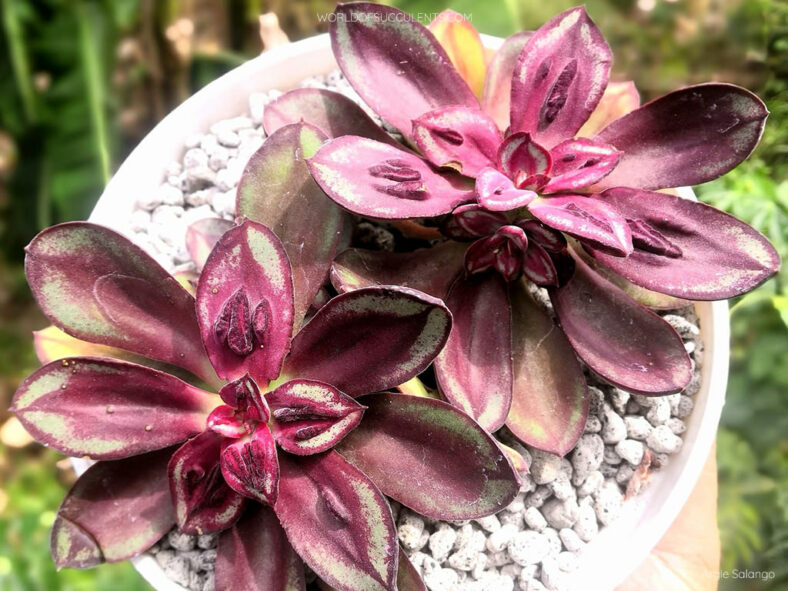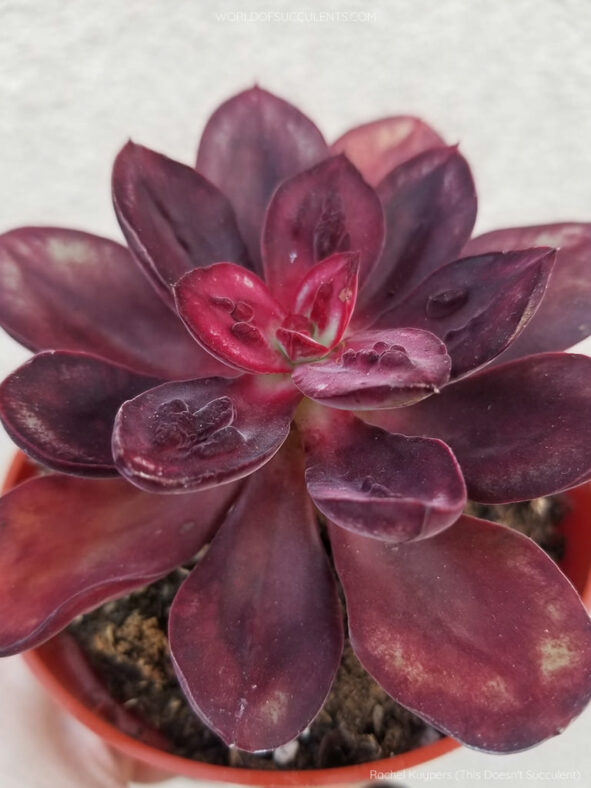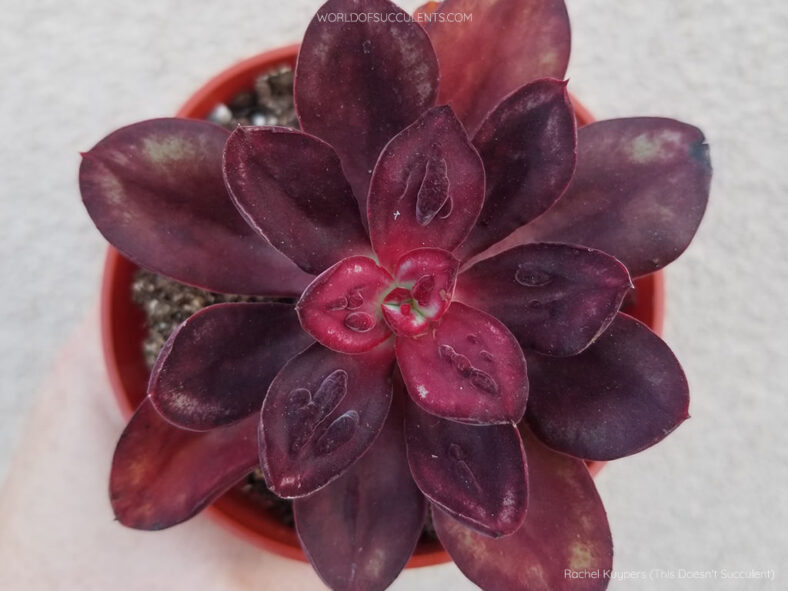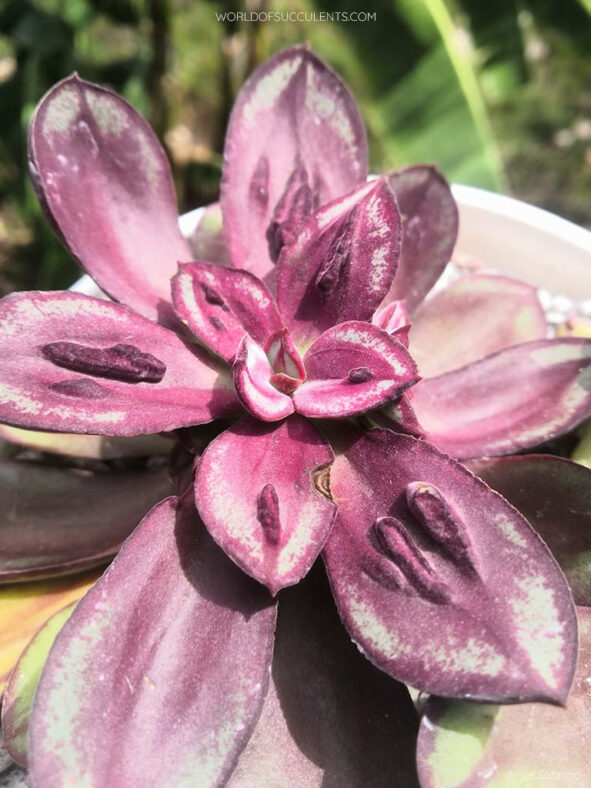Echeveria nodulosa 'Maruba Benitsukasa' is a beautiful, uniquely shaped cultivar.
Scientific Name
Echeveria nodulosa 'Maruba Benitsukasa'
Synonym(s)
Echeveria 'Benitsukasa', Echeveria 'Maruba Benitsukasa'
Scientific Classification
Family: Crassulaceae
Subfamily: Sempervivoideae
Tribe: Sedeae
Genus: Echeveria
Etymology
The cultivar name "Maruba Benitsukasa" is a transliteration of four Japanese characters: "maru," meaning "round," "ba," meaning "leaf," "beni," meaning "red," and "tsukasa," meaning "high class or valuable."
Origin
Echeveria nodulosa 'Maruba Benitsukasa' is a Japanese cultivar of Echeveria nodulosa.
Description
Echeveria nodulosa 'Maruba Benitsukasa' is an eye-catching succulent with branched stems that bear rosettes of colorful, occasionally carunculate leaves. The rosettes usually grow about 3.2 inches (8 cm) in diameter. They are smaller and more compact than the rosettes of Echeveria nodulosa. The leaves are dull apple green and ornamented with purplish-red margins and markings. They become purplish-red in full sun. The colors of the leaves vary depending on the season and growing conditions.
During spring or summer, Echeveria nodulosa 'Maruba Benitsukasa' produces erect, unbranched stalks of bell-shaped, rose-red flowers with yellowish tips of petals. The flower stalk can grow up to 12 inches (30 cm) tall.

How to Grow and Care for Echeveria nodulosa 'Maruba Benitsukasa'
Light: Echeveria nodulosa 'Maruba Benitsukasa' requires full sun to partial shade for optimal growth. Therefore, place it near the brightest window in your home. If you move the plant outside in the spring, gradually acclimate it to avoid exposure to intense afternoon sun.
Soil: Having soil that drains quickly is most important for growing a healthy succulent. While many growers prefer to create their own soil mix, commercial soil for succulents is also suitable.
Temperature: High temperatures are not a problem as long as there is plenty of fresh air. However, Echeveria nodulosa 'Maruba Benitsukasa' is a tender succulent that must be brought indoors if there is a risk of freezing temperatures. It grows best in USDA Plant Hardiness Zones 10a to 11b, with average minimum winter temperatures ranging from 30°F to 50°F (-1.1°C to 10°C).
Watering: This plant prefers the "soak and dry" method during the growing season. Water deeply and allow the soil to dry completely before watering again. Water sparingly during the winter, only enough to keep the plant from shriveling. Above all, if you have a saucer under the pot, be sure to empty the excess water.
Fertilizing: Although it can grow well without fertilizer, Echeveria nodulosa 'Maruba Benitsukasa' may benefit from extra nutrients. Feed only during the growing season and use a water-soluble fertilizer diluted to half the recommended strength.
Repotting: If growing this plant in a container, repot as needed in spring or early summer, but ensure the soil is dry before you start. Also, always use a container with drainage holes.
Propagation: Echeveria nodulosa 'Maruba Benitsukasa' can be propagated by leaves or offsets, with the best time being spring.
Learn more at How to Grow and Care for Echeveria.
Toxicity of Echeveria nodulosa 'Maruba Benitsukasa'
Echeveria nodulosa 'Maruba Benitsukasa' has no reported toxic effects. However, although it is safe for growing around children and pets, it is not advisable to eat it.
Links
- Back to genus Echeveria
- Succupedia: Browse succulents by Scientific Name, Common Name, Genus, Family, USDA Hardiness Zone, Origin, or cacti by Genus
Photo Gallery
Click on a photo to see a larger version.


